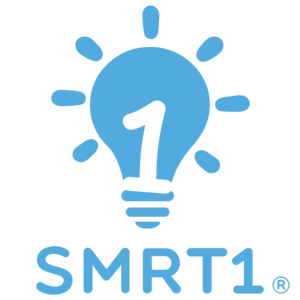Smart vending machines represent a technological evolution of traditional vending machines, incorporating internet connectivity, interactive displays, advanced payment systems, and data analytics capabilities. Unlike their conventional counterparts that operate as standalone units with mechanical buttons and coin slots, smart vending machines function as connected devices within a larger technological ecosystem. This connectivity and intelligence enable them to provide enhanced user experiences, operational efficiencies, and valuable data insights across various applications from retail to healthcare.
Smart vending machines work through a sophisticated integration of hardware, software, and connectivity technologies. The touchscreen interface provides an intuitive way for users to browse products and complete purchases. Cloud connectivity enables remote management, data collection, and system updates. Advanced dispensing mechanisms safely deliver products ranging from snacks to critical healthcare supplies. Multiple payment options ensure accessibility for all users. And robust security features protect both physical inventory and digital information.
What truly sets smart vending machines apart from their traditional counterparts is their ability to function as connected nodes in larger systems rather than standalone units. A SMRT1 CARE POD in a community center isn’t just a box that dispenses products; it’s an extension of healthcare services that provides access, education, and data while maintaining the privacy and dignity of users.
As technology continues to advance, smart vending machines will likely incorporate even more capabilities such as enhanced artificial intelligence for personalization, improved accessibility features, and deeper integration with other systems. The fundamental working principles, however, will remain the same: connecting physical dispensing capabilities with digital intelligence to create convenient, efficient, and informative automated retail experiences, whether for commercial products or essential healthcare supplies.
IoT Connectivity
At their core, smart vending machines are part of the Internet of Things (IoT), meaning they connect to the internet through cellular networks, Wi-Fi, or Ethernet connections. This internet connectivity links the physical vending machine to cloud-based software platforms that enable several key functions:
Real-time Communication: Smart vending machines maintain a constant connection to the cloud, allowing them to send and receive information instantly. This enables operators to monitor machine status, inventory levels, and sales data from anywhere in the world through a web dashboard or mobile app.
Data Synchronization: Product information, pricing, promotional content, and operational settings can be updated remotely through the cloud. When operators make changes in the central management system, those changes sync automatically to the machines in the field without requiring physical visits.
Integration with Other Systems: The internet connection allows smart vending machines to integrate with other business systems such as inventory management software, payment processors, digital marketing platforms, and even healthcare records systems (for medical applications). This integration creates a seamless flow of information across multiple platforms.
For healthcare applications, this connectivity is particularly important. A SMRT1 CARE POD dispensing harm reduction supplies or medications can instantly report usage patterns to public health officials, helping them understand community needs and respond appropriately.
User Interface and Experience
The most visible difference between smart and traditional vending machines is the user interface:
Interactive Touchscreen: Most smart vending machines feature a large touchscreen display (typically ranging from 15 to 49 inches) that replaces the traditional buttons and small product windows. This touchscreen serves as the primary point of interaction for customers.
Digital Product Catalog: Rather than seeing physical products through glass, users browse a digital catalog of available items. This allows for much richer product information including detailed descriptions, nutritional facts for food items, usage instructions for healthcare products, or compatibility information for electronics.
Multimedia Capabilities: The touchscreen can display videos, animations, and interactive content. For example, a healthcare-focused smart vending machine might show educational videos about proper medication use or harm reduction techniques.
Personalization: Based on previous interactions or user accounts, smart vending machines can provide personalized experiences. They might remember favorite purchases, offer relevant promotions, or customize the interface for the specific user.
Accessibility Features: Advanced smart vending machines can include features for users with disabilities. These might include voice control for visually impaired users, simplified interfaces for those with cognitive disabilities, or physical design elements that accommodate wheelchair users.
In healthcare contexts, these interface capabilities transform a simple transaction into an educational opportunity. A SMRT1 CARE POD dispensing naloxone kits, for instance, can provide critical instruction on how to recognize an overdose and properly administer the medication, potentially saving lives through both the product dispensed and the knowledge shared.
Payment Systems
Smart vending machines offer flexible payment options that far exceed the traditional coin and bill acceptors:
Cashless Payments: Smart vending machines accept credit and debit cards through built-in card readers. These readers typically support both chip and contactless transactions, providing secure payment processing without requiring cash.
Mobile Payments: Integration with digital wallets like Apple Pay, Google Pay, and Samsung Pay allows customers to pay with their smartphones or smartwatches. This is often implemented through NFC (Near Field Communication) technology that enables tap-to-pay functionality.
QR Code Payments: Many smart vending machines display QR codes that customers can scan with their mobile devices to complete payments through various apps or services. This contactless method has become increasingly popular in recent years.
Custom Payment Solutions: In certain applications, especially healthcare, smart vending machines can implement specialized payment or access systems. For example, insurance verification for prescription medications, program-specific access codes for harm reduction supplies, or employee badge integration for workplace deployments.
Traditional Cash Options: While emphasizing digital payments, many smart vending machines still include traditional cash acceptance capabilities to serve all customers, though some newer models are going cashless to reduce maintenance and security concerns.
All electronic payment transactions processed through SMRT1 systems use encryption and secure networks (Virtual Private Networks or VPNs) to protect sensitive financial information. This end-to-end protection ensures that customer payment data remains secure throughout the transaction process.
Hardware Components
Behind the touchscreen interface, smart vending machines contain several critical hardware components that enable their functionality:
Computing System: A central computer or controller board serves as the brain of the smart vending machine. In SMRT1 systems, this is typically a powerful embedded processor running Linux operating system, which manages all the machine’s functions from user interface to payment processing to dispensing operations.
Connectivity Hardware: Modules for Wi-Fi, cellular connectivity (4G/5G), or Ethernet connections enable the internet connectivity that defines smart vending. These components establish and maintain the connection to cloud services.
Dispensing Mechanisms: Depending on the products being sold, smart vending machines may use various dispensing systems:
- Spiral coils or augers for packaged products
- Conveyor belts for fragile items
- Robotic arms or elevators for careful delivery of sensitive products
- Custom mechanisms for specialized items like medications or healthcare supplies
Security Hardware: Physical security features like reinforced glass, industrial-grade locks, and in some cases, cameras or sensors to detect and deter tampering. For healthcare applications dispensing controlled items, these security measures are often more robust.
Power Management: Smart vending machines include power management systems that optimize energy consumption and can enter energy-saving modes during periods of inactivity. Some advanced units even incorporate backup power systems for critical applications.
Data Collection and Analytics
One of the most powerful aspects of smart vending machines is their ability to collect and analyze data:
Transaction Data: Every purchase is recorded with details such as product selected, price paid, payment method used, and timestamp. This basic sales data forms the foundation of vending analytics.
Interaction Metrics: Beyond completed purchases, smart vending machines track how users interact with the interface: which products they view but don’t purchase, how long they spend browsing different categories, and which promotional content generates the most engagement.
Inventory Tracking: Real-time monitoring of product levels allows operators to know exactly what’s in stock and what needs replenishing. The system can generate automatic alerts when items run low.
Anonymous Demographics: Some advanced smart vending systems use camera sensors with privacy-preserving analytics to estimate demographic information like approximate age ranges and gender distribution of those interacting with the machine. This data is aggregated and not tied to individuals.
In healthcare applications, this data collection capability is particularly valuable. Public health departments using SMRT1 CARE PODs can gather anonymous usage statistics that inform program development and resource allocation. For example, tracking which harm reduction supplies are most frequently accessed at different locations helps officials understand community needs while preserving user privacy.
Security Features
Security is a critical aspect of smart vending machines, particularly for those deployed in healthcare settings. SMRT1 systems incorporate multiple layers of security:
Data Encryption: All data transmitted between the vending machine and cloud servers is encrypted using 256-bit encryption standards. This protects sensitive information from interception during transmission. Personal information and payment details are never stored unencrypted on the machine itself.
Operating System Security: SMRT1 vending machines operate on secure Linux-based systems rather than Windows. This choice reduces vulnerability to common malware and viruses that typically target Windows systems. The operating systems are also regularly updated with security patches.
Advanced Cybersecurity: SMRT1 employs SentinelOne cybersecurity protection on both cloud services and physical POD devices. This advanced security software actively monitors for and blocks potential cyber threats in real-time.
Physical Security: Smart vending machines incorporate robust physical security features including industrial-grade locks, tamper-evident seals, and in some cases, surveillance cameras. For healthcare applications dispensing controlled substances or valuable medical supplies, these physical security measures are particularly important.
User Authentication: When dispensing age-restricted products or prescription items, smart vending machines can implement various authentication methods including ID scanning, biometric verification, or secure access codes to ensure products are only dispensed to authorized recipients.
Privacy Protection: SMRT1 systems are designed with privacy in mind, particularly important for healthcare applications. No personally identifiable information is stored on the machines themselves, and any data collected for analytics is anonymized to protect user privacy while still providing valuable insights.
Healthcare Applications
While smart vending technology has many applications, its use in healthcare settings showcases some of the most innovative implementations:
Harm Reduction: SMRT1 CARE PODs are deployed by public health departments to provide 24/7 access to harm reduction supplies like naloxone (overdose reversal kits), clean syringes, and fentanyl test strips. These machines work by combining secure dispensing with educational content on the touchscreen, while collecting anonymous usage data that helps health officials understand community needs.
Medication Access: In hospitals, clinics, and pharmacies, smart vending machines extend medication access beyond staffed hours. After identity verification (often through a secure code provided by a healthcare provider), patients can access prescribed medications or over-the-counter products even when the pharmacy is closed.
Personal Protective Equipment: During public health emergencies, smart vending machines provide controlled distribution of essential supplies like masks, gloves, and sanitizer. The machines can be programmed with distribution limits to prevent hoarding while ensuring equitable access.
Health Education: The interactive screens on healthcare-focused smart vending machines deliver important health information along with products. For example, a machine dispensing HIV test kits might also provide video instructions for use, information on local testing resources, and even anonymous notification systems for partners.
Telemedicine Integration: Advanced implementations connect smart vending technology with telehealth services. Users might speak with a healthcare provider through the machine’s screen before receiving appropriate products, combining human expertise with automated dispensing.
These healthcare applications rely on all the core technologies of smart vending: cloud connectivity enables real-time inventory monitoring and remote management; sophisticated user interfaces provide critical education; flexible payment systems can accommodate insurance, government programs, or free distribution; and data collection helps measure program effectiveness while maintaining privacy.
Smart vending machines are part of the IoT or “Internet of things” which means that machines are connected to the Internet cloud. This allows smart vending machines to access everything on the internet including customer data, product information, and also collects data on the customer experience and pathway to purchase.
Smart vending machines also take a variety of payments so the customer isn’t limited by the loose change in their pockets. Digital payments through cellphones or e-wallets are secure and safe. SMRT1 Cloud utilizes encryption and virtual private networks to provide end-to-end protection for consumers.

